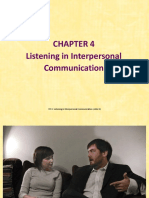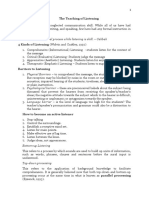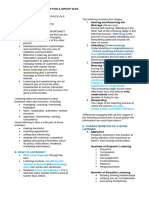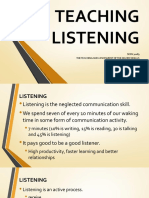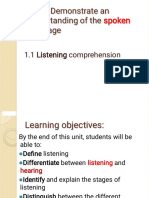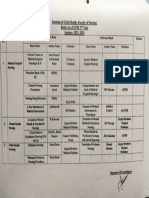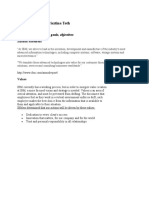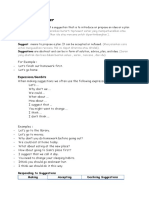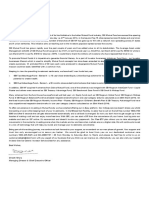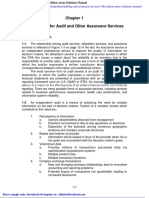0% found this document useful (0 votes)
62 views18 pagesDone By: Mrs. Maram Miralam: Listening in Human Communication
Uploaded by
Ambreen Anwar AhmedCopyright
© © All Rights Reserved
We take content rights seriously. If you suspect this is your content, claim it here.
Available Formats
Download as PPTX, PDF, TXT or read online on Scribd
0% found this document useful (0 votes)
62 views18 pagesDone By: Mrs. Maram Miralam: Listening in Human Communication
Uploaded by
Ambreen Anwar AhmedCopyright
© © All Rights Reserved
We take content rights seriously. If you suspect this is your content, claim it here.
Available Formats
Download as PPTX, PDF, TXT or read online on Scribd
/ 18















